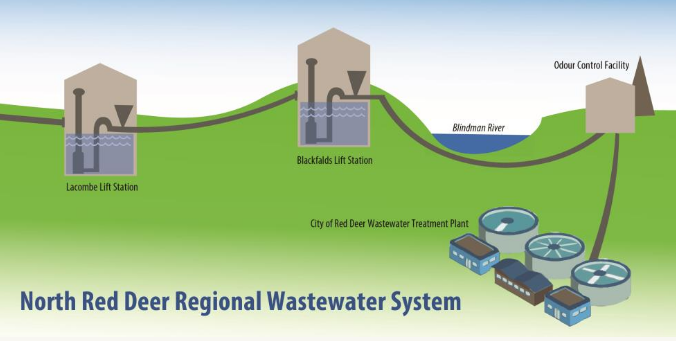
Ground breaking held for North Red Deer Regional Wastewater Transmission System
March 27, 2017
By
CCE
Total cost of the wastewater transmission project is estimated to run over $70 million.

(source: City of Lacombe)
Amarjeet Sohi, federal Minister of Infrastructure and Communities, was on hand to celebrate the start of construction on the North Red Deer Regional Wastewater Transmission System.
This infrastructure project will connect the City of Lacombe, Town of Blackfalds, and Lacombe County to the regional wastewater treatment facility in Red Deer, Alberta. It includes the construction of 26 kilometres of wastewater pipeline, regional lift stations in Lacombe and Blackfalds and an odour-management facility in the Red Deer. Odour-management strategies will also be implemented at both lift stations and at air release points along the pipeline. The system follows a similar model to the award-winning South Red Deer Regional Wastewater System developed for communities in central Alberta.
The federal government will contribute up to $29.8 million toward this project under the Clean Water and Wastewater Fund. The Government of Alberta will provide $27.4 million, with the North Red Deer Regional Wastewater Services Commission (NRDRWWSC) covering the remaining costs of the project, which has a total estimated cost of over $70 million.
“This regional wastewater transmission system has long been a top priority for the City of Lacombe and our partner municipalities in the North Red Deer Regional Wastewater Commission. We are very appreciative of the strong support provide by the Government of Canada and the Alberta government in moving this vital infrastructure project forward. It will yield immediate economic benefits in terms of employment during construction and will provide for much-needed long-term sustainability in addressing Lacombe’s critical wastewater needs,” said Steve Christie, mayor of Lacombe and chair of the NRDRWWSC.
The partnering municipalities undertook the project based on the need to meet new federal and provincial regulatory guidelines for wastewater treatment. After exploring other options, the regional system was found to be the most economical option available — 90% of construction costs will be covered by grant funding.